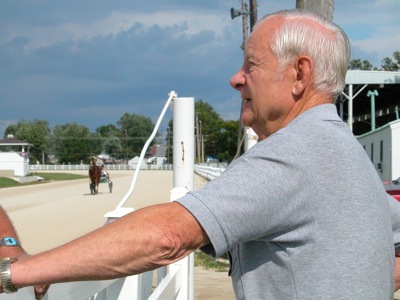Friday, August 8th, 2008
Company looking at county land for wind turbines
By Shelley Grieshop
A Chicago, Ill.,-based company is looking at areas of Mercer County that might be suitable for a wind turbine project to produce electricity.
Invenergy LLC and its wind division experts currently are focusing on the southern portion of the county. Company officials already have talked to some property owners about setting aside land for windmill fields to create the renewable energy source.
Eric Miller, director of business development for Invenergy, and an associate gave an hourlong presentation to Mercer County commissioners on Thursday to explain the process, the company's intentions and the benefits to the local communities.
"The county is attractive to us, its agriculture and rural areas are what we're looking for," Miller said.
The county has sufficient open areas and elevation levels to produce good wind speeds, as well as available electric transmission infrastructure needed for such a project, Miller said.
Miller told commissioners - who appeared in favor of a local turbine project - the clean, economical energy source creates a stable and competitively-priced form of electricity.
Taxes paid through the sale of electricity produced would benefit local communities and their schools, Miller explained. Jobs would be created during the project's construction phase but he admitted they would be minimal following its completion. The company estimates employment of one maintenance person per turbine.
Local property owners - likely farmers - would receive an initial payment for the use of their land and then be paid annually per turbine for whatever amount is agreed upon in a lease, Miller explained. The land would remain in the property owner's name but would be maintained by Invenergy, currently the world's largest privately-owned wind energy developer in the U.S.
"The response so far has been pretty positive," Miller said of the discussions he's had so far with local landowners.
Currently, Invenergy has no "wind farms," as they are called, in Ohio. The only wind turbine farm in the state is located in Bowling Green.
Miller made it clear that if Invenergy contracts with an interested property owner locally, a project completion date would be at least three years away, mainly due to the wait for permits. It also takes about nine months to build a turbine, he added.
Miller was reluctant to pinpoint the company's specific areas of interest in southern Mercer County, saying in-depth testing must be performed before making decisions or commitments. A temporary measurement tower will be put into place "in the near future" to track wind speeds, Miller said. He did not indicate where.
Commissioner Bob Nuding said another renewable energy company constructed a wind measurement tower in the St. Joe area this spring. However, the name of the business was not available at press time.
The turbines used to produce electricity are large - 389 feet high with blades spanning 135 feet - and require approximately 100 acres per turbine. The turbines are typically constructed from 1,000 to 2,000 feet apart.
The company's largest turbine project is currently being built in Texas and will have 100 turbines on site; the smallest, with 15, is located in Tennessee. Invenergy projects also are in operation in Montana, Colorado, Idaho, Iowa, Oklahoma, Wisconsin, Illinois and Poland. Besides the huge Texas project, others currently under construction are located in Oregon and New York.
Miller discussed many concerns the public may have such as noise, shadows, lighting and safety issues.
"The sound isn't like grinding gears, like many people think. It's a swooshing sound," he said.
However, the company advises turbines not be built within 1,000 feet of a residence.
The Federal Aviation Administration requires one of every three wind turbines in a farm to have a red, slowly flashing light near the top. The lights are programmed to blink in a synchronized manner.
Earlier this year, Invenergy signed a $1 billion-plus contract with General Electric to manufacture the towering turbines.
"We have the contracts (for equipment), now all we need are the projects," Miller said.
Wind power legislation:
Senate Bill 221, signed by Ohio Gov. Ted Strickland in May, requires utilities to increase their purchase of renewable energy for electricity.
The legislation includes strong standards for renewable energy and energy efficiency that demands 12.5 percent of the state's electricity coming from clean renewable sources and a 22 percent combined reduction in energy usage by 2025.
Ohio is the 26th state in the country to enact a renewable energy standard that combines traditional electrical sources with wind and solar resources.
- Shelley Grieshop
